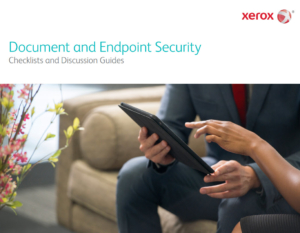Stories about hacking are everywhere in the news lately. Hacking is a serious and growing problem that can affect anyone—governments, businesses and everyday people.
You go to great lengths to protect your personal information. And governments and corporations do all they can to secure their networks and encrypt their data. But there’s an often-overlooked area with big potential for causing harm: documents, and the “endpoints” that produce them. Endpoints are things like printers and multifunction printers (MFPs).
 The problem is most data breaches happen by accident, because of people’s carelessness. Rarely are malicious attacks made intentionally on printers. More likely, it’s just old-fashioned human error that leaves documents wide open for hacking.
The problem is most data breaches happen by accident, because of people’s carelessness. Rarely are malicious attacks made intentionally on printers. More likely, it’s just old-fashioned human error that leaves documents wide open for hacking.
So how can you protect your documents? We’ve compiled a handy guide to help you do exactly that. Our “Document and Endpoint Security” eBook offers checklists and discussion points to help you make smart choices about information security. It covers topics such as:
User-Related Issues: Research and experience tell us the riskiest part of a document process might be the people who use it. By tapping into analytics, you can find out how users are working with documents and devices, and where potential risks reside. User analytics let you see who is accessing, printing and scanning certain types of documents and intellectual property. With information in hand, you can decide if additional safeguards are needed.
Device Factors: As data moves in and out of MFPs or fax machines, where is your document-based information most vulnerable? Are your MFPs secured with state-of-the-art encryption? Do you have a complete separation between phone lines and network fax connections? Can your devices automatically overwrite image files stored on them? What happens if a device falls out of compliance with your company’s security policy? Use our checklists to help ensure security for the life of each device.
Managed Print Services: Working with a Managed Print Services (MPS) vendor may be the best way to bring your document and endpoint security up to snuff. But how do you evaluate your MPS vendor’s security credentials? We’ll show you the right questions to ask.
Learn more
Read “Partners in Data Protection,” which discusses different ways Xerox works with our customers to prevent data from getting into the wrong hands, inside and outside the work environment.*
When everyone is informed and on the same page, you can be more confident in your document security decisions. What is your organization doing to address document and endpoint security? Let us know in the comments below.
Updated November 30, 2017




Why not include information on how to enable encryption or hard disk overwrite for example. Maybe even a short description of what they do and how it helps secure information.
Peter: Thank you for your comment. I asked the editor of our At Your Service blog for help, and she gave me three things we need to know:
1) Current products have 256-bit Encryption (FIPS 140-2 compliant) standard. So encryption is built in – the user doesn’t have to do anything else. (But users should check with potential MPS providers to assure their MFPs are encrypted.)
2) The instructions for overwrite are in our online knowledge bases. Go to Xerox support and enter the model of the machine. Select the “Support” link, then search for “overwrite” in the search field.
3) She published “Xerox On Demand Overwrite – Security at Your Fingertips” in May 2016. Check it out. At Your Service helps readers understand and use the features, options and services on all our products.
Cheers!
Greg
I would like to know more about this process.
Dav, thanks for your question. Here are a few ways to learn more:
1) Download our free “Document and Endpoint Security” eBook.
2) Contact us. Please give us your details on this form, and we’ll get in touch.
Cheers!
Greg